Even the most advanced military projects don’t always go as planned. Despite high hopes and hefty investments, some weapons systems just don’t make the grade. In this article, we’ll explore 20 military weapons systems that flopped spectacularly, highlighting the missteps and lessons learned from these ambitious yet unsuccessful ventures.
Contents
M247 Sergeant York DIVAD
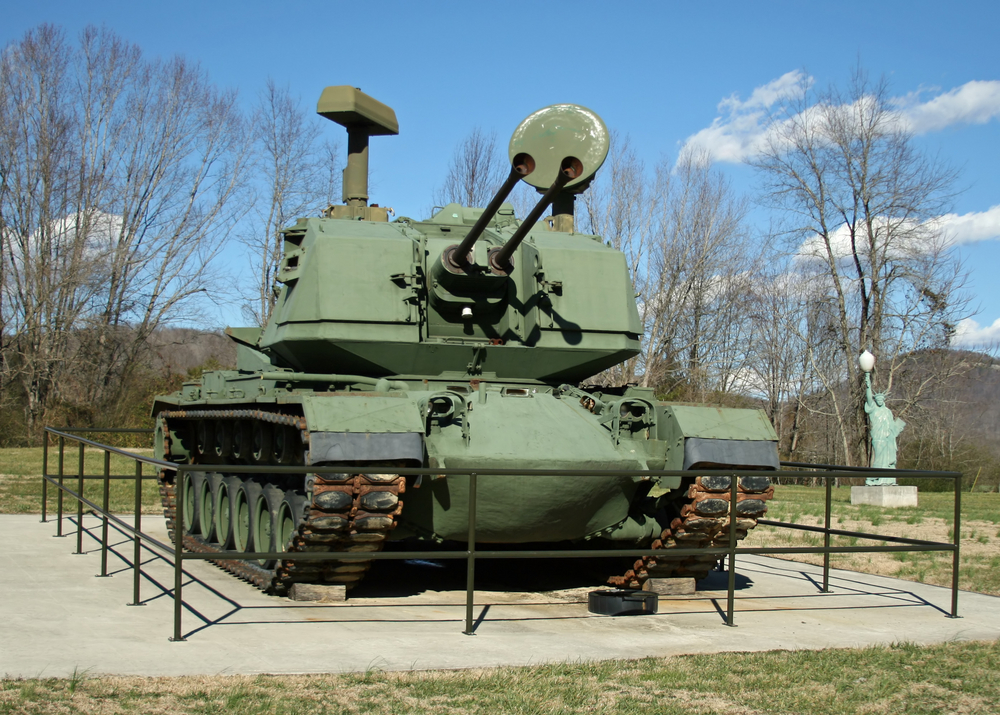
The M247 Sergeant York DIVAD was an anti-aircraft weapon system designed to protect ground troops from aerial attacks. However, it suffered from numerous technical flaws, including an unreliable targeting system that struggled to track moving targets. Its inability to perform in real-world scenarios led to its cancellation after significant investment.
F-20 Tigershark

The Northrop F-20 Tigershark was a lightweight fighter jet intended for export to U.S. allies. Despite its impressive performance and cost-effectiveness, it failed to secure buyers due to geopolitical shifts and competition from other aircraft like the F-16, leading to its cancellation.
Boeing YAL-1 Airborne Laser
The Boeing YAL-1 was an airborne laser designed to shoot down ballistic missiles. While it successfully engaged targets in tests, the system was plagued by high costs, technical challenges, and limited operational range, resulting in the program’s termination.
Lockheed Martin F-35 Lightning II (early production issues)
The F-35 Lightning II faced numerous issues during its early production phases, including software glitches, cost overruns, and performance shortfalls. These problems delayed its deployment and drew significant criticism, though later improvements have mitigated some initial concerns.
Zumwalt-class Destroyer
The Zumwalt-class destroyer was envisioned as a revolutionary stealth warship with advanced weaponry. However, its exorbitant costs, technical difficulties, and reduced armament capabilities led to a drastic reduction in the number of ships ordered, making it a costly experiment.
MBT-70
The MBT-70 was a joint U.S.-German project aimed at creating a cutting-edge main battle tank. Despite innovative features like a low-profile turret and advanced suspension, the project was canceled due to skyrocketing costs and technical issues, resulting in wasted resources and time.
Rheinmetall MG3 Variants
Certain variants of the Rheinmetall MG3 machine gun faced reliability issues, particularly in adverse conditions. These problems included jamming and parts wear, leading to limited adoption and eventual replacement by more dependable models.
USS Enterprise (CVN-65) reactor issues
The USS Enterprise, the world’s first nuclear-powered aircraft carrier, faced significant reactor issues that required extensive and costly maintenance. These problems highlighted the challenges of early nuclear propulsion technology and impacted the ship’s operational readiness.
P6M SeaMaster
The P6M SeaMaster was a strategic bomber designed for the U.S. Navy to operate from water. Despite its innovative concept, the program was canceled due to budget constraints and the shifting focus to missile-based deterrence, rendering the aircraft obsolete.
Rockwell XFV-12
The Rockwell XFV-12 was an experimental vertical takeoff and landing (VTOL) aircraft intended for carrier operations. It failed due to insufficient thrust-to-weight ratio and complex engineering challenges, making it unable to achieve stable flight and leading to its abandonment.
McDonnell XF-85 Goblin

The XF-85 Goblin was a “parasite” fighter designed to be deployed from a bomber. Its compact size compromised performance and handling, and docking with the bomber in-flight proved extremely difficult, resulting in the project’s termination.
Lockheed AH-56 Cheyenne
The AH-56 Cheyenne was an advanced attack helicopter with both helicopter and fixed-wing capabilities. Technical difficulties, cost overruns, and the emergence of more suitable alternatives like the AH-64 Apache led to its cancellation after significant investment.
G11 Assault Rifle

The Heckler & Koch G11 was a revolutionary assault rifle using caseless ammunition. Despite its innovative design, reliability issues, complex maintenance, and the collapse of its primary market with the end of the Cold War led to the project’s end.
Northrop F-89 Scorpion
The F-89 Scorpion was an early jet-powered interceptor that suffered from various performance issues, including limited speed and maneuverability. It was eventually overshadowed by more capable aircraft, leading to its phase-out.
T-64 Tank (initial reliability issues)
The Soviet T-64 tank introduced advanced features like composite armor and a smoothbore gun. However, early models were plagued by reliability problems, particularly with the engine and transmission, which hindered its operational effectiveness.
Sea Shadow (IX-529)
The Sea Shadow was an experimental stealth ship designed to test radar-evading technologies. While it succeeded in its primary goal, the vessel’s impractical design and limited application prevented it from transitioning to active service.
The Objective Individual Combat Weapon (OICW)
The OICW aimed to combine a grenade launcher and rifle into a single weapon. Despite its innovative approach, it was too heavy, complex, and expensive for practical use, resulting in its cancellation after extensive development.
Hughes XF-11

The XF-11 was a reconnaissance aircraft designed by Howard Hughes. A crash during a test flight due to control system failure highlighted its flaws, leading to the project’s termination in favor of more reliable alternatives.
RQ-170 Sentinel

The RQ-170 Sentinel, a stealth drone, faced several issues, including one being captured by Iran, which exposed its vulnerabilities. Despite some operational success, these incidents marred its reputation and highlighted significant security flaws.
British FV101 Scorpion (early versions)

The FV101 Scorpion was a light reconnaissance tank. Early versions experienced mechanical reliability issues and vulnerabilities in combat, which limited its effectiveness until later improvements were made.
This article originally appeared in MyCarMakesNoise.
More from MyCarMakesNoise
20 Game-Changing Developments in Truck Manufacturing

Truck manufacturing has seen game-changing developments that have transformed the industry, making trucks more powerful, efficient, and versatile than ever before. From the integration of electric drivetrains and hybrid technology to advanced safety features like automatic braking and lane assist, these innovations are reshaping how trucks are built and driven. Read More
20 Best Backroads for a Peaceful Drive

For those seeking a break from the hustle of city traffic, backroads offer a peaceful and scenic escape. These quiet routes wind through countryside, forests, and rolling hills, providing a serene atmosphere perfect for leisurely drives. Read More
Top 20 Fastest Cars That Have Ever Hit the Streets

Speed has always been a thrilling aspect of automotive engineering, pushing the boundaries of what’s possible. Some cars have set remarkable records, becoming legends in the world of high-performance vehicles. Read More














